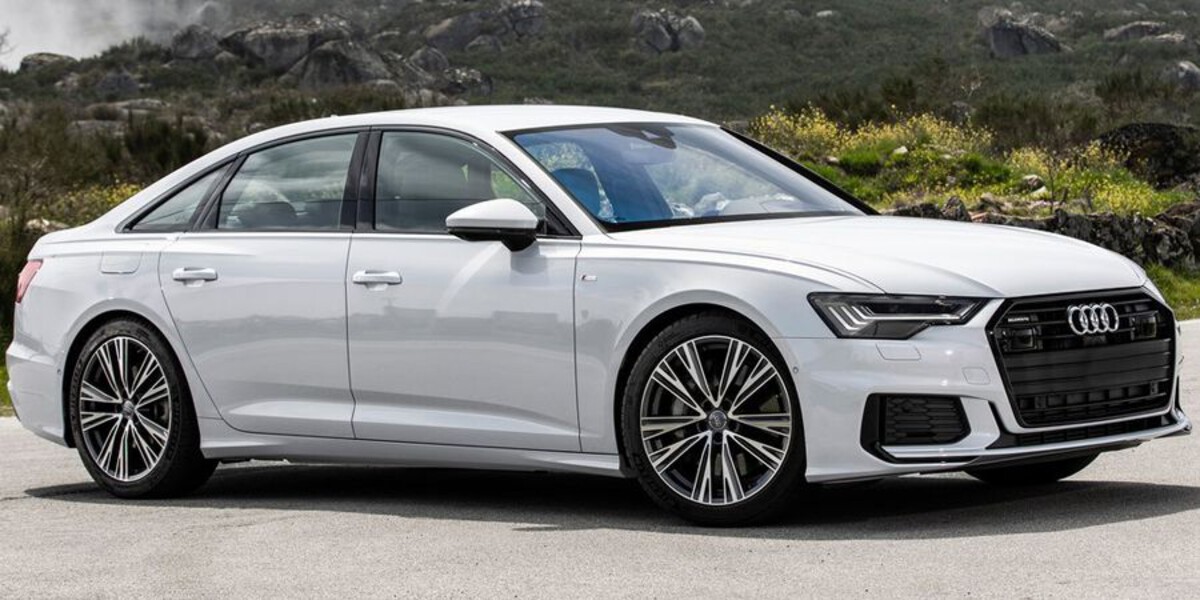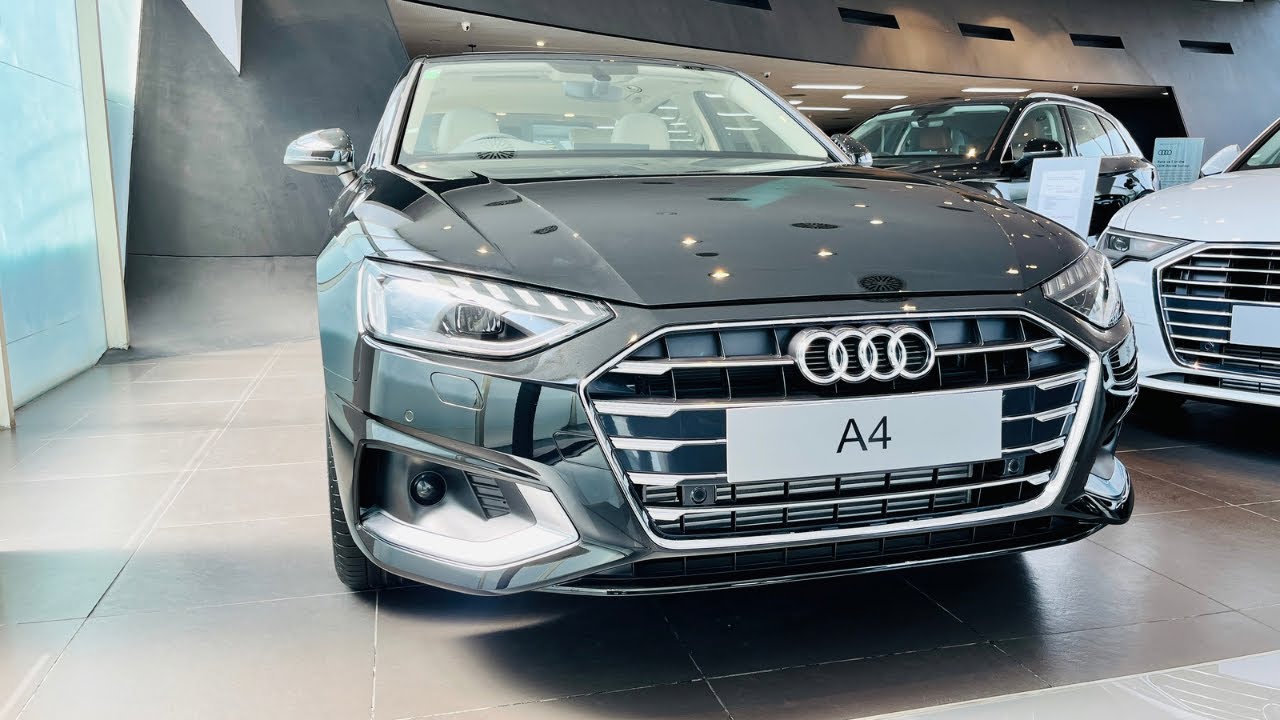When purchasing a sedan, one of the most crucial yet often overlooked factors is the maintenance schedule. The frequency of required service visits can significantly impact your total cost of ownership, convenience, and long-term satisfaction with your vehicle.
Modern automotive engineering has created a fascinating divide in the sedan market: some models are designed with extended service intervals that allow owners to go 12,000 to 20,000 miles between scheduled maintenance visits, while others require attention every 5,000 to 7,500 miles.
This variation isn’t merely about manufacturer preference it reflects fundamental differences in engineering philosophy, component quality, fluid specifications, and target market positioning.
Sedans with longer service intervals typically incorporate advanced synthetic lubricants, sophisticated filtration systems, and robust components designed to withstand extended operational periods.
These vehicles often feature variable service interval systems that use onboard computers to monitor driving conditions, oil quality, and component wear to determine optimal service timing.
Conversely, sedans requiring frequent servicing may utilize conventional oils, have more sensitive components, or be designed with performance characteristics that demand closer monitoring.
While frequent service requirements might seem disadvantageous, they can sometimes indicate a manufacturer’s commitment to preventive maintenance, potentially extending overall vehicle lifespan and maintaining peak performance.
Understanding these differences empowers consumers to make informed decisions based on their driving habits, budget considerations, and lifestyle preferences.
The following analysis examines ten sedans that represent the extremes of this maintenance spectrum, providing detailed insights into what makes some models remarkably low-maintenance while others demand regular attention.
5 Sedans with the Longest Service Intervals
These exceptionally engineered vehicles feature robust powertrains and precision-manufactured components that maintain peak performance through extended service intervals, often reaching 10,000 to 15,000 miles between scheduled maintenance visits.
Their thoughtful engineering includes advanced synthetic oil systems, long-life filters, and durable transmission designs that resist the wear patterns typically created by stop-and-go driving or aggressive acceleration cycles.
From extreme temperature variations that stress engine components to the constant demands of daily commuting, these remarkable sedans continue operating smoothly without developing premature component failures or requiring frequent attention.
Owners report years of worry-free driving with these dependable vehicles a cost-saving quality feature that proves its worth through reduced maintenance expenses and maximized driving time between service appointments throughout ownership.
1. BMW 5 Series – Up to 15,000 Miles/12 Months
The BMW 5 Series stands as a remarkable example of German engineering excellence, particularly in its approach to extended service intervals. The BMW 5 Series is a great choice for a luxury sedan, and this reputation extends significantly to its maintenance philosophy.
BMW’s Condition Based Service (CBS) system represents one of the most sophisticated maintenance monitoring technologies in the automotive industry, allowing the 5 Series to achieve service intervals of up to 15,000 miles or 12 months under optimal driving conditions.
The foundation of the 5 Series’ extended service capability lies in its advanced lubrication system. BMW specifies high-quality synthetic engine oils that maintain their protective properties far longer than conventional alternatives.
The oil monitoring system continuously analyzes factors including engine temperature, RPM patterns, ambient conditions, and driving style to calculate remaining oil life with remarkable precision. This intelligent system prevents both premature servicing and potential damage from extended oil use.
The 5 Series’ robust construction contributes significantly to its low-maintenance characteristics. The engine block, manufactured with precision casting techniques, maintains tight tolerances that reduce oil consumption and contamination.
Advanced filtration systems, including high-capacity oil filters and sophisticated air filtration, protect critical components from debris and contaminants that could necessitate frequent servicing.
BMW’s variable valve timing technology, VANOS, not only enhances performance but also reduces engine stress by optimizing valve operation across different driving conditions.

This sophisticated system minimizes wear on timing components, contributing to extended service intervals. The direct injection fuel system, while complex, is designed with self-cleaning capabilities that reduce carbon buildup and maintain optimal combustion efficiency.
The 5 Series’ transmission systems, whether the smooth 8-speed automatic or the precise manual options, are engineered for longevity. The automatic transmission incorporates adaptive learning algorithms that optimize shift patterns based on driving style, reducing mechanical stress and extending fluid change intervals.
BMW’s transmission fluids are synthetic formulations designed to maintain their properties for extended periods. Electronic systems in the 5 Series are designed with redundancy and self-diagnostic capabilities that identify potential issues before they require immediate attention.
The advanced onboard diagnostics can predict component failures and schedule maintenance accordingly, preventing unexpected breakdowns while maximizing intervals between service visits.
The cooling system incorporates long-life coolant formulations and efficient heat exchangers that maintain optimal operating temperatures with minimal maintenance requirements.
The electric cooling fans and sophisticated thermostatic controls ensure the engine operates within optimal temperature ranges, reducing thermal stress and extending component life.
Brake systems in the 5 Series feature advanced materials and design that provide excellent longevity. The brake pads utilize low-dust formulations that reduce contamination of other components, while the brake fluid monitoring system alerts drivers only when actual fluid replacement is necessary, not based on arbitrary time intervals.
2. Mercedes-Benz E-Class – Up to 20,000 Miles/2 Years
The Mercedes-Benz E-Class represents the pinnacle of extended service interval engineering, with some variants capable of operating up to 20,000 miles or two years between scheduled maintenance visits.
This achievement reflects Mercedes-Benz’s ASSYST PLUS service indicator system, which uses sophisticated algorithms to monitor vehicle condition and determine optimal service timing based on actual operating conditions rather than predetermined schedules.
Mercedes-Benz has invested heavily in developing synthetic lubricants specifically formulated for extended service intervals. The MB 229.5 engine oil specification represents years of research into friction reduction, thermal stability, and oxidation resistance.
These specially formulated oils maintain their protective properties significantly longer than conventional alternatives, enabling the E-Class to achieve remarkable service intervals without compromising engine protection.
The E-Class engine design incorporates numerous features that support extended maintenance intervals. Precision-manufactured cylinder walls with advanced surface treatments reduce friction and oil consumption.
The oil pump system maintains optimal pressure across varying conditions, ensuring consistent lubrication even as oil ages. Advanced piston ring designs minimize blow-by gases that can contaminate engine oil, extending its useful life. Filtration systems in the E-Class are engineered for maximum efficiency and longevity.
The oil filter incorporates multiple filtration media types, including synthetic materials that capture progressively smaller particles as they accumulate filtration media. This progressive filtration approach maintains oil cleanliness throughout extended service intervals.

The E-Class air filtration system protects the engine from contaminants that could accelerate wear and reduce service intervals. High-efficiency cabin air filters not only improve interior air quality but also reduce the load on climate control systems, contributing to overall vehicle efficiency and reduced maintenance requirements.
Transmission technology in the E-Class supports extended service intervals through advanced fluid formulations and adaptive control systems. The 9G-TRONIC transmission incorporates learning algorithms that optimize shift patterns for efficiency and longevity.
The transmission fluid is a synthetic formulation designed to maintain its properties for extended periods while providing superior protection against wear and oxidation.
The E-Class incorporates advanced engine management systems that optimize combustion efficiency and reduce component stress. Direct injection technology, combined with sophisticated fuel delivery systems, maintains clean combustion that reduces carbon deposits and extends component life.
Variable valve timing systems adapt to driving conditions, optimizing performance while minimizing wear. Cooling systems in the E-Class utilize long-life coolant formulations that resist corrosion and maintain heat transfer efficiency for extended periods.
The cooling system incorporates multiple temperature sensors and adaptive control systems that maintain optimal operating temperatures while minimizing thermal cycling that can stress components.
Electronic systems throughout the E-Class are designed with predictive maintenance capabilities. Sensors monitor component operation and can predict potential failures, allowing for proactive maintenance scheduling rather than reactive repairs. This approach maximizes service intervals while preventing unexpected component failures.
3. Audi A6 – Up to 15,000 Miles/12 Months
The Audi A6 exemplifies Volkswagen Group’s engineering philosophy of combining performance with practicality, achieving service intervals of up to 15,000 miles or 12 months through sophisticated technology and premium materials.
Audi’s Flexible Service System represents one of the most advanced maintenance monitoring technologies available, analyzing numerous vehicle parameters to determine optimal service timing.
Audi’s commitment to extended service intervals begins with engine design and manufacturing. The A6’s engines incorporate numerous technologies that support long-term reliability and extended maintenance intervals.
Precision casting techniques ensure consistent metal properties and tight tolerances that reduce oil consumption and maintain compression efficiency. Advanced surface treatments on cylinder walls reduce friction and wear, contributing to extended oil life.
The lubrication system in the A6 is engineered for maximum efficiency and longevity. Audi specifies synthetic engine oils that exceed industry standards for thermal stability, oxidation resistance, and friction reduction.
The oil monitoring system continuously analyzes oil condition through multiple sensors, providing accurate assessments of remaining oil life based on actual conditions rather than predetermined intervals.
Filtration technology in the A6 represents a significant engineering investment in extended service capability. Multi-stage oil filtration systems incorporate various media types designed to capture different contaminant sizes and types.
As the filtration media loads with contaminants, it becomes more efficient at capturing smaller particles, maintaining oil cleanliness throughout extended service intervals.

The A6’s direct injection fuel system incorporates self-cleaning technologies that reduce carbon buildup and maintain optimal combustion efficiency.
High-pressure fuel injectors deliver precise fuel quantities that optimize combustion while minimizing deposits on intake valves and combustion chambers. This technology reduces the need for frequent cleaning services that plague some direct injection engines.
Transmission systems in the A6 are designed with longevity and extended service intervals as primary considerations. The multitronic CVT and S tronic dual-clutch transmissions incorporate synthetic fluids formulated specifically for extended service life.
Adaptive control systems optimize operation for efficiency and component longevity while maintaining excellent performance characteristics. Variable valve timing technology in the A6 optimizes engine operation across different driving conditions while minimizing component stress.
The valvetrain incorporates advanced materials and surface treatments that resist wear and maintain optimal operation throughout extended service intervals. Hydraulic valve adjusters automatically compensate for wear, maintaining optimal valve operation without manual adjustment.
The A6’s cooling system incorporates long-life coolant formulations that resist corrosion and maintain heat transfer efficiency for extended periods.
The cooling system design includes multiple sensors and adaptive controls that optimize operating temperature while minimizing thermal stress on components. Electric cooling fans and sophisticated thermostatic controls ensure optimal temperature management.
Electronic systems throughout the A6 incorporate predictive maintenance capabilities that monitor component operation and predict potential failures.
This proactive approach allows for optimal maintenance scheduling while preventing unexpected component failures. The advanced diagnostics can identify developing issues before they require immediate attention, maximizing service intervals while maintaining reliability.
4. Lexus ES – Up to 12,000 Miles/12 Months
The Lexus ES represents Toyota’s luxury division’s commitment to reliability and extended service intervals, achieving up to 12,000 miles or 12 months between scheduled maintenance visits through proven engineering and advanced materials.
Lexus has built its reputation on exceptional reliability and low maintenance requirements, and the ES exemplifies these characteristics through sophisticated engineering and premium component specifications.
Toyota’s approach to extended service intervals in the ES focuses on proven technologies and conservative engineering margins that ensure long-term reliability.
The engine design incorporates numerous features that support extended maintenance intervals while maintaining the exceptional reliability for which Lexus is renowned. Precision manufacturing techniques ensure consistent tolerances and surface finishes that reduce friction and wear.
The lubrication system in the ES is engineered with extended service intervals as a primary consideration. Lexus specifies synthetic or synthetic blend engine oils that maintain their protective properties significantly longer than conventional alternatives.
The oil monitoring system analyzes driving conditions and provides service recommendations based on actual operating conditions rather than predetermined mileage intervals. Filtration systems in the ES represent a significant engineering investment in component protection and extended service capability.
High-efficiency oil filters incorporate multiple filtration media types designed to capture contaminants while maintaining oil flow throughout extended service intervals. The air filtration system protects the engine from environmental contaminants that could accelerate wear and reduce service intervals.

The ES incorporates hybrid technology in many variants, which contributes significantly to extended service intervals. The hybrid system reduces engine operating hours by utilizing electric power during low-load conditions, effectively extending engine oil life and reducing wear on mechanical components.
The regenerative braking system reduces brake pad wear, extending brake service intervals significantly beyond conventional vehicles. Transmission technology in the ES supports extended service intervals through advanced design and premium materials.
The continuously variable transmission (CVT) incorporates synthetic fluids designed for extended service life while providing smooth, efficient operation. The transmission control system optimizes operation for longevity while maintaining excellent fuel economy and performance.
Engine management systems in the ES optimize operation for efficiency and component longevity. Variable valve timing systems adapt to driving conditions, optimizing performance while minimizing wear on valve train components.
The direct injection system, when equipped, incorporates technologies that minimize carbon deposit formation, reducing the need for frequent cleaning services.
The ES cooling system utilizes long-life coolant formulations that resist corrosion and maintain heat transfer efficiency for extended periods. The cooling system design incorporates multiple temperature sensors and adaptive controls that maintain optimal operating temperatures while minimizing thermal cycling that can stress components.
Electronic systems throughout the ES are designed with reliability and predictive maintenance capabilities as primary considerations. Comprehensive onboard diagnostics monitor component operation and can predict potential issues before they require immediate attention. This proactive approach maximizes service intervals while preventing unexpected failures.
Also Read:5 EVs With Most Interior Storage And 5 Bare-bones Cabins
5. Volvo S90 – Up to 15,000 Miles/12 Months
The Volvo S90 represents Swedish engineering excellence in achieving extended service intervals, with capabilities of up to 15,000 miles or 12 months between scheduled maintenance visits.
Volvo’s approach combines advanced materials science, sophisticated monitoring systems, and conservative engineering margins to achieve remarkable maintenance intervals while maintaining the safety and reliability standards for which the brand is renowned.
Volvo’s commitment to extended service intervals in the S90 begins with engine design and manufacturing philosophy. The engines incorporate numerous advanced technologies that support long-term reliability and extended maintenance intervals.
Precision casting and machining techniques ensure consistent component properties and optimal surface finishes that reduce friction and wear throughout extended operating periods.
The lubrication system in the S90 represents a significant engineering investment in extended service capability. Volvo specifies high-quality synthetic engine oils that exceed industry standards for thermal stability, oxidation resistance, and friction reduction.
The oil monitoring system continuously analyzes multiple parameters to determine optimal oil life based on actual operating conditions rather than predetermined schedules. Filtration technology in the S90 incorporates multiple stages designed to maintain oil and air cleanliness throughout extended service intervals.
The oil filtration system utilizes advanced media types that capture progressively smaller contaminants as they accumulate, maintaining oil quality throughout extended service periods. High-efficiency air filtration protects the engine from environmental contaminants.

The S90’s Drive-E engine technology incorporates numerous features that support extended maintenance intervals. Turbocharging and supercharging technologies are engineered with robust materials and precise tolerances that maintain optimal operation throughout extended service periods.
Advanced intercooling systems maintain optimal intake air temperatures, reducing thermal stress on engine components. Transmission systems in the S90 are designed with extended service intervals as a primary consideration.
The eight-speed automatic transmission incorporates synthetic fluids formulated for extended service life while providing smooth, efficient operation. Adaptive control systems optimize shift patterns for efficiency and component longevity while maintaining excellent performance characteristics.
The S90’s all-wheel-drive system, when equipped, is engineered for extended service intervals through advanced materials and lubrication systems.
The center differential and rear differential incorporate synthetic lubricants designed for extended service life while providing reliable power distribution across varying driving conditions.
Electronic systems throughout the S90 incorporate advanced monitoring and predictive maintenance capabilities. Comprehensive sensors monitor component operation and can predict potential issues before they require immediate attention.
The advanced diagnostics system provides detailed information about component condition and optimal maintenance timing. The S90’s cooling system incorporates long-life coolant formulations and efficient heat exchangers that maintain optimal operating temperatures with minimal maintenance requirements.
The cooling system design includes multiple sensors and adaptive controls that optimize temperature management while minimizing thermal stress on components.
5 Sedans Requiring Frequent Service Visits
These maintenance-intensive vehicles require regular attention due to complex engineering designs and components that demand frequent inspection, adjustment, or replacement to maintain optimal performance and reliability standards.
Their sophisticated systems include intricate turbocharging setups, delicate electronic modules, and precision-tuned suspension components that are sensitive to normal wear patterns and environmental conditions.
From advanced direct-injection systems that require specialized cleaning procedures to complex all-wheel-drive mechanisms that need regular fluid changes, these sedans demand dedicated service schedules to prevent costly breakdowns.
Owners discover that while these vehicles offer impressive performance and luxury features, they require significantly higher maintenance investments and more frequent service center visits to preserve their sophisticated engineering and maintain their intended driving experience.
1. BMW 3 Series (Turbocharged Models) – Every 5,000-7,500 Miles
The BMW 3 Series, particularly in its turbocharged configurations, represents a fascinating contradiction in automotive engineering. While delivering exceptional performance and driving dynamics, these models require more frequent maintenance attention than their larger 5 Series siblings, typically necessitating service visits every 5,000 to 7,500 miles depending on driving conditions and specific engine variant.
The turbocharged engines in the 3 Series, while technologically advanced and performance-oriented, operate under significantly higher stress levels than naturally aspirated alternatives.
Turbocharging technology inherently creates higher operating pressures and temperatures throughout the engine system, accelerating oil breakdown and increasing contamination rates.
The high-pressure turbocharger bearings require consistently clean, high-quality oil to maintain proper lubrication and prevent premature failure.
Direct injection technology, standard across most 3 Series turbocharged engines, contributes to more frequent service requirements through several mechanisms.
The high-pressure fuel injection system operates at pressures exceeding 2,000 PSI, creating microscopic fuel particles that can contaminate engine oil more rapidly than conventional port injection systems. Additionally, direct injection engines are prone to carbon buildup on intake valves, requiring periodic cleaning services that increase overall maintenance frequency.

The 3 Series N20 and B48 turbocharged engines incorporate sophisticated variable valve timing and lift systems that, while enhancing performance, require more frequent monitoring and maintenance.
These systems rely on precise oil pressure control and cleanliness to maintain optimal operation. Oil contamination or degradation can affect hydraulic actuator operation, leading to performance issues and potential component damage.
Heat management in turbocharged 3 Series engines presents ongoing maintenance challenges. The turbocharger housing reaches extreme temperatures during operation, creating thermal cycling stress on nearby components and accelerating oil degradation in the turbocharger bearing housing.
Post-shutdown heat soak can create oil coking in turbocharger oil passages, necessitating more frequent oil changes to prevent bearing damage.
The 3 Series cooling system works harder than naturally aspirated alternatives due to turbocharger heat loads and higher compression ratios. Coolant degradation occurs more rapidly under these conditions, requiring more frequent coolant system maintenance.
The intercooler system, essential for maintaining optimal intake air temperatures, requires periodic cleaning and inspection to maintain efficiency. Fuel system maintenance in turbocharged 3 Series models requires more attention due to the high-pressure direct injection components.
Fuel injectors operating at extreme pressures are sensitive to fuel quality and contamination, potentially requiring more frequent cleaning or replacement. The high-pressure fuel pump, driven by the engine camshaft, experiences significant mechanical stress and may require more frequent inspection and maintenance.
The advanced engine management systems in turbocharged 3 Series models, while sophisticated, require regular software updates and calibration adjustments to maintain optimal performance.
Sensor drift and contamination can affect engine operation, necessitating more frequent diagnostic procedures and potential component replacement.
Transmission systems paired with turbocharged 3 Series engines experience higher torque loads and more frequent power delivery variations, potentially accelerating fluid degradation and component wear.
The ZF 8-speed automatic transmission, while generally reliable, may require more frequent fluid changes when paired with high-output turbocharged engines.
2. Audi A4 (TFSI Models) – Every 5,000-7,500 Miles
The Audi A4 TFSI models represent Audi’s commitment to performance and efficiency through turbocharging and direct injection technology, but these advanced systems necessitate more frequent maintenance attention, typically requiring service visits every 5,000 to 7,500 miles to maintain optimal operation and prevent costly component failures.
Audi’s TFSI (Turbo Fuel Stratified Injection) technology combines turbocharging with direct injection to deliver impressive performance and efficiency, but this complexity requires diligent maintenance.
The turbocharger in A4 TFSI engines operates at extremely high speeds, often exceeding 200,000 RPM, with shaft bearings that require consistently clean, high-quality oil for proper lubrication and cooling.
The direct injection system in A4 TFSI engines creates unique maintenance challenges that necessitate more frequent service intervals. High-pressure fuel injectors operating at pressures exceeding 150 bar are sensitive to fuel quality and contamination.
Carbon buildup on intake valves, a common issue with direct injection engines, requires periodic cleaning services to maintain optimal airflow and engine performance.
Variable valve timing and lift systems in the A4 TFSI engines rely on precise hydraulic control that demands clean, properly viscosity-matched engine oil.
The timing chain tensioning system, in particular, is sensitive to oil condition and can develop issues if service intervals are extended beyond recommended limits. Oil contamination can affect hydraulic actuator operation, leading to timing irregularities and potential engine damage.

Heat management presents ongoing challenges in A4 TFSI engines due to the combination of turbocharging and direct injection. The turbocharger housing reaches extreme temperatures during operation, creating thermal stress on surrounding components and accelerating oil degradation.
Heat soak after engine shutdown can cause oil coking in turbocharger passages, necessitating frequent oil changes to prevent bearing damage. The A4’s cooling system works under higher stress due to turbocharger heat loads and higher compression ratios typical of TFSI engines.
Coolant degradation occurs more rapidly under these elevated temperature conditions, requiring more frequent cooling system maintenance. The intercooler system requires periodic cleaning to maintain optimal heat exchange efficiency.
Fuel system components in A4 TFSI models require more frequent attention due to the high-pressure direct injection requirements. The high-pressure fuel pump, mechanically driven by the engine, experiences significant stress and may require more frequent inspection and potential replacement.
Fuel quality becomes critical in these high-pressure systems, with contamination potentially causing expensive component damage. The A4’s advanced engine management systems require regular updates and calibration to maintain optimal performance with TFSI technology.
Multiple sensors monitoring boost pressure, air-fuel ratios, and combustion parameters can drift over time, requiring more frequent diagnostic procedures and potential replacement to maintain optimal engine operation.
PCV (Positive Crankcase Ventilation) systems in A4 TFSI engines work harder due to increased crankcase pressures from turbocharging. These systems can become clogged more rapidly, leading to oil leaks, increased oil consumption, and potential engine damage if not maintained more frequently than naturally aspirated alternatives.
Transmission systems paired with TFSI engines in the A4 experience higher torque loads and more aggressive power delivery characteristics, potentially accelerating fluid degradation and component wear.
The dual-clutch S tronic transmission, while providing excellent performance, requires more frequent fluid changes and clutch pack inspections compared to conventional automatic transmissions.
3. Mercedes-Benz C-Class (AMG Models) – Every 3,500-5,000 Miles
The Mercedes-Benz C-Class AMG models represent the pinnacle of performance engineering in the compact luxury sedan segment, but this exceptional performance comes with correspondingly intensive maintenance requirements.
These high-performance variants typically require service visits every 3,500 to 5,000 miles to maintain their exceptional performance capabilities and prevent costly component failures.
AMG engines in the C-Class operate at significantly higher stress levels than their standard counterparts, with forced induction systems that create extreme operating conditions.
The handcrafted AMG engines, while masterpieces of engineering, require meticulous maintenance due to their high-performance nature. Turbocharger systems in AMG models operate at extreme speeds and temperatures, requiring consistently pristine oil conditions for proper bearing lubrication and cooling.
The direct injection systems in C-Class AMG models operate at even higher pressures than standard engines, creating accelerated oil contamination and increased component stress.
High-pressure fuel injectors require exceptionally clean fuel and precise calibration to maintain optimal performance. Carbon buildup issues are accelerated in high-performance applications, requiring more frequent cleaning services.
Variable valve timing and camshaft adjustment systems in AMG engines rely on extremely precise hydraulic control that demands frequent oil changes with specific viscosity and additive packages. The performance-oriented calibrations place higher demands on these systems, making them more sensitive to oil condition and contamination.

Heat management in C-Class AMG models presents significant challenges due to the extreme power output and associated thermal loads. Multiple turbochargers, intercoolers, and heat exchangers create complex thermal management requirements.
Oil temperatures and degradation rates are significantly higher than standard engines, necessitating more frequent oil changes to prevent component damage.
The cooling systems in AMG models work under extreme stress due to high heat rejection requirements and performance-oriented operating conditions.
Coolant degradation occurs rapidly under these conditions, and the complex cooling circuits require more frequent maintenance and inspection. Additional cooling components, such as transmission coolers and differential coolers, add maintenance complexity.
Transmission systems in C-Class AMG models, particularly the AMG SPEEDSHIFT DCT dual-clutch transmission, require intensive maintenance due to the extreme torque loads and aggressive shift patterns.
Clutch pack wear rates are accelerated under performance driving conditions, requiring more frequent inspection and potential replacement. Transmission fluids degrade more rapidly under high-stress conditions.
The exhaust systems in AMG models, with their complex valve arrangements and high-temperature operation, require more frequent inspection and maintenance.
Exhaust valve actuators and associated components are subject to extreme thermal cycling and may require more frequent replacement than standard systems.
Electronic systems in C-Class AMG models are more complex and numerous than standard variants, with additional sensors and control modules monitoring performance parameters.
These systems require more frequent diagnostic procedures and software updates to maintain optimal performance and prevent component conflicts.
Brake systems in AMG models experience significantly higher thermal and mechanical stress due to increased vehicle performance and weight. High-performance brake pads and rotors require more frequent inspection and replacement, while brake fluid changes must be performed more frequently due to higher operating temperatures.
4. Cadillac CTS-V – Every 3,000-5,000 Miles
The Cadillac CTS-V represents American high-performance engineering at its finest, featuring supercharged V8 power that delivers exceptional performance but demands correspondingly intensive maintenance attention.
These high-performance sedans typically require service visits every 3,000 to 5,000 miles to maintain their extraordinary performance capabilities and ensure long-term reliability under extreme operating conditions.
The supercharged LT4 V8 engine in the CTS-V operates under extreme conditions that accelerate oil degradation and component wear. The Eaton supercharger creates significant heat and pressure loads throughout the engine system, requiring consistently clean, high-quality oil for proper lubrication of critical components.
The positive displacement supercharger operates at high speeds directly driven by the crankshaft, creating constant additional load on the engine.
Direct injection technology in the CTS-V’s LT4 engine, combined with supercharging, creates accelerated contamination and carbon buildup issues.
The high-pressure fuel injectors must operate under extreme conditions, requiring exceptional fuel quality and more frequent cleaning services. Carbon deposits on intake valves accumulate more rapidly under supercharged conditions due to increased cylinder pressures and temperatures.
The variable valve timing system in the LT4 engine relies on precise oil pressure control that becomes more critical under supercharged conditions.
Oil contamination can affect cam phaser operation, leading to timing issues and potential engine damage. The hydraulically actuated systems require clean oil with specific viscosity characteristics to maintain proper operation.

Heat management in the CTS-V presents significant challenges due to the combination of high displacement, supercharging, and performance-oriented operation.
The supercharger intercooler system requires regular maintenance to maintain optimal heat exchange efficiency. Oil temperatures are significantly elevated compared to naturally aspirated engines, accelerating oil degradation and requiring more frequent changes.
The cooling system in the CTS-V works under extreme stress due to the high heat rejection requirements of the supercharged engine. Coolant degradation occurs more rapidly under these elevated temperature conditions, and the complex cooling circuits with multiple heat exchangers require more frequent maintenance and inspection.
Transmission systems in the CTS-V, particularly the 8-speed automatic and 6-speed manual options, experience extreme torque loads that accelerate component wear and fluid degradation.
The automatic transmission incorporates additional cooling systems to manage the heat generated by high-torque operation, requiring more frequent fluid changes and cooling system maintenance.
The CTS-V’s sophisticated electronic systems, including the Magnetic Ride Control suspension and Performance Traction Management, require more frequent diagnostic procedures and calibration updates.
These performance-oriented systems have numerous sensors and actuators that may require more frequent maintenance and replacement due to the extreme operating conditions.
Brake systems in the CTS-V experience extraordinary thermal and mechanical stress due to the vehicle’s exceptional performance capabilities. Brembo high-performance brake components require more frequent inspection and maintenance, with brake fluid changes needed more frequently due to extreme operating temperatures generated during performance driving.
The exhaust system in the CTS-V, with its performance-oriented design and valve systems, requires more frequent inspection due to high-temperature operation and thermal cycling. Exhaust components may require more frequent replacement due to the extreme conditions created by the high-performance engine.
5. Jaguar XF Supercharged – Every 4,000-6,000 Miles
The Jaguar XF Supercharged represents British luxury performance engineering, combining sophisticated design with high-performance capabilities that require intensive maintenance attention.
These supercharged models typically necessitate service visits every 4,000 to 6,000 miles to maintain their refined performance characteristics and prevent the costly component failures that can result from deferred maintenance.
The supercharged V6 and V8 engines in XF models operate under conditions that accelerate oil degradation and component wear. The Roots-type supercharger creates significant additional heat and pressure loads throughout the engine system, requiring consistently clean, high-quality oil for proper lubrication of the supercharger bearings and engine components.
The belt-driven supercharger adds mechanical complexity and additional heat generation to the engine bay. Direct injection technology in supercharged XF models creates accelerated contamination issues and carbon buildup problems.
The high-pressure fuel injection system must operate under the extreme conditions created by supercharging, requiring exceptional fuel quality and more frequent system cleaning.
Carbon deposits accumulate more rapidly on intake valves due to the absence of fuel washing and the higher cylinder pressures created by supercharging.
Variable valve timing systems in the XF’s supercharged engines rely on precise hydraulic control that becomes more critical under forced induction conditions.
The cam timing systems require clean oil with specific viscosity characteristics to maintain proper operation. Oil contamination can lead to timing irregularities that affect performance and potentially cause engine damage.

Heat management in the supercharged XF presents ongoing challenges due to the combination of supercharging and the compact engine bay packaging typical of luxury sedans.
The supercharger intercooler system requires regular maintenance to maintain optimal efficiency, while elevated oil temperatures accelerate degradation and necessitate more frequent oil changes.
The cooling system in the XF works under increased stress due to the additional heat loads created by supercharging. Coolant degradation occurs more rapidly under these conditions, and the complex cooling circuits require more frequent maintenance.
The sophisticated thermostatic controls and electric cooling fans require more frequent inspection and potential replacement. Transmission systems in supercharged XF models experience higher torque loads that can accelerate component wear and fluid degradation.
The ZF 8-speed automatic transmission, while generally reliable, requires more frequent fluid changes when paired with high-output supercharged engines. The transmission cooling system also requires more frequent maintenance due to increased heat generation.
The XF’s advanced electronic systems, including the adaptive suspension and terrain response systems, require more frequent diagnostic procedures and software updates.
These sophisticated systems incorporate numerous sensors and actuators that may require more frequent calibration and potential replacement due to the increased complexity and operating demands.
Brake systems in supercharged XF models experience higher thermal loads due to the increased vehicle performance and weight. The brake cooling systems require more frequent inspection, while brake fluid must be changed more frequently due to elevated operating temperatures.
High-performance brake components may require more frequent replacement due to increased duty cycles. The sophisticated air suspension system available in XF models requires more frequent maintenance due to the complexity of the pneumatic components and electronic controls.
Air struts, compressors, and associated components require regular inspection and may need more frequent replacement compared to conventional suspension systems.
Also Read: 5 Hybrids With Best Warm-weather AC And 5 That Struggle

